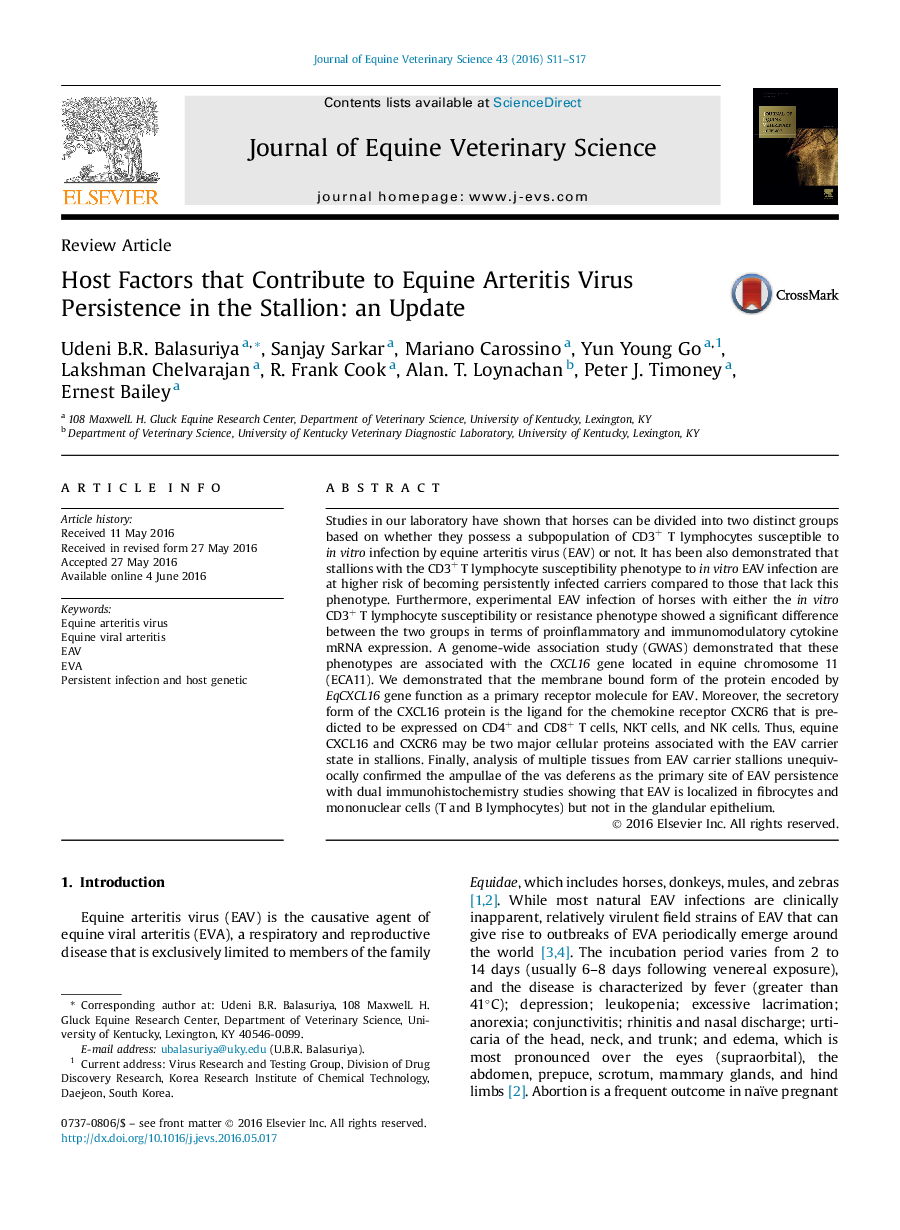| کد مقاله | کد نشریه | سال انتشار | مقاله انگلیسی | نسخه تمام متن |
|---|---|---|---|---|
| 2394352 | 1101517 | 2016 | 7 صفحه PDF | دانلود رایگان |
• In vitro susceptibility of equine CD3+ T lymphocytes to equine arteritis virus (EAV) strongly correlates with the establishment of persistent infection in the stallion.
• Equine CXCL16 (EqCXCL16) appears to be a key cellular protein associated with EAV carrier state in stallions.
• Equine arteritis virus is localized exclusively in the reproductive tract of carrier stallions.
• The ampullae of the vas deference are the primary site of EAV persistence.
Studies in our laboratory have shown that horses can be divided into two distinct groups based on whether they possess a subpopulation of CD3+ T lymphocytes susceptible to in vitro infection by equine arteritis virus (EAV) or not. It has been also demonstrated that stallions with the CD3+ T lymphocyte susceptibility phenotype to in vitro EAV infection are at higher risk of becoming persistently infected carriers compared to those that lack this phenotype. Furthermore, experimental EAV infection of horses with either the in vitro CD3+ T lymphocyte susceptibility or resistance phenotype showed a significant difference between the two groups in terms of proinflammatory and immunomodulatory cytokine mRNA expression. A genome-wide association study (GWAS) demonstrated that these phenotypes are associated with the CXCL16 gene located in equine chromosome 11 (ECA11). We demonstrated that the membrane bound form of the protein encoded by EqCXCL16 gene function as a primary receptor molecule for EAV. Moreover, the secretory form of the CXCL16 protein is the ligand for the chemokine receptor CXCR6 that is predicted to be expressed on CD4+ and CD8+ T cells, NKT cells, and NK cells. Thus, equine CXCL16 and CXCR6 may be two major cellular proteins associated with the EAV carrier state in stallions. Finally, analysis of multiple tissues from EAV carrier stallions unequivocally confirmed the ampullae of the vas deferens as the primary site of EAV persistence with dual immunohistochemistry studies showing that EAV is localized in fibrocytes and mononuclear cells (T and B lymphocytes) but not in the glandular epithelium.
Journal: Journal of Equine Veterinary Science - Volume 43, Supplement, August 2016, Pages S11–S17
